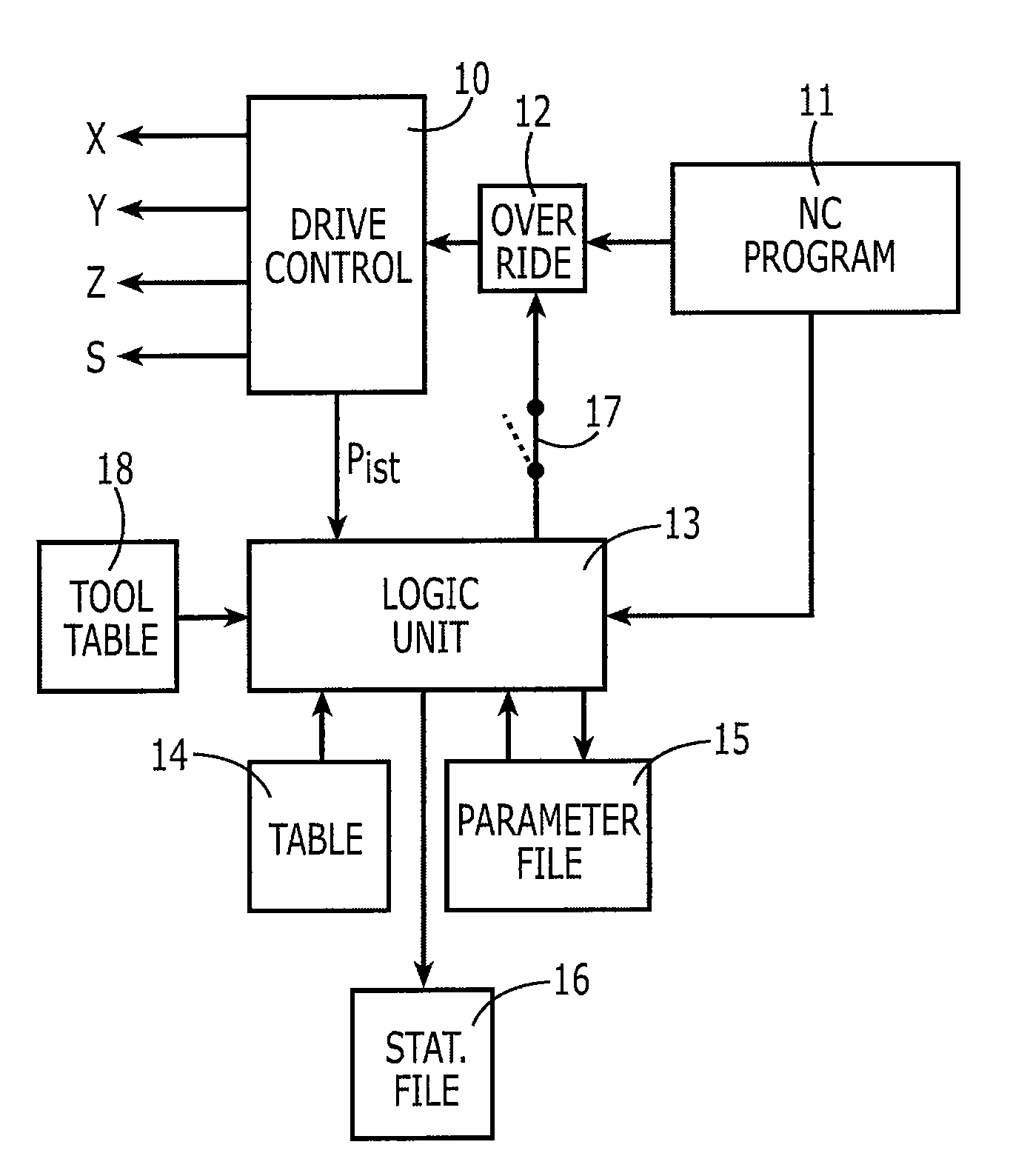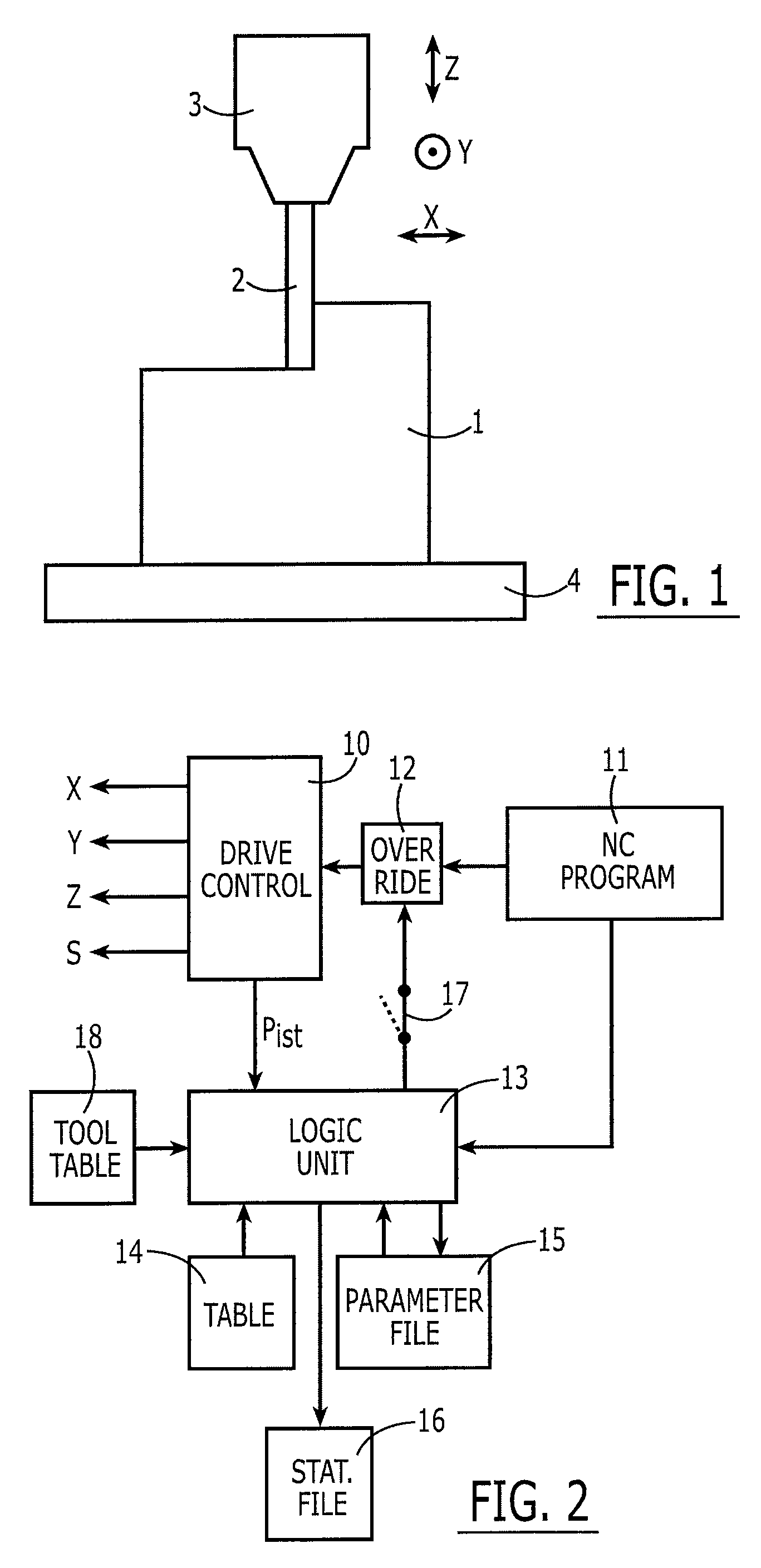Method for adaptive feed rate regulation on numerically controlled machine tools
a numerically controlled machine tool and feed rate regulation technology, applied in the direction of program control, instruments, electric digital data processing, etc., can solve the problems of large effort, large processing surface of workpieces, and increased power, and achieve the effect of simple and safe operation
- Summary
- Abstract
- Description
- Claims
- Application Information
AI Technical Summary
Benefits of technology
Problems solved by technology
Method used
Image
Examples
Embodiment Construction
[0025]FIG. 1 schematically illustrates a section of a machine tool. A workpiece 1 is mounted on a table 4. As illustrated in FIG. 1, the workpiece 1 is being worked on by a tool 2 (e.g., a milling tool), which is fastened to a spindle 3, and is rotated, e.g., at great rotary speed by this spindle 3.
[0026]Tool 2 is movable with respect to workpiece 1 in three directions X, Y, Z. Other machine tools are able to permit further or different directions of motion between tool 2 and workpiece 1, for example, by additional swivel axes.
[0027]The input power of spindle 3 depends on at what feed and at how much contact area with workpiece 1 milling cutter 2 is being moved. Thus, the input power is relatively small if spindle 3 is already rotating at setpoint rotary speed, but milling tool 2 is not yet in contact with workpiece 1. The spindle power is very large if milling cutter 2 is being moved very rapidly and at large contact area through workpiece 1. The spindle then has to perform the wor...
PUM
 Login to View More
Login to View More Abstract
Description
Claims
Application Information
 Login to View More
Login to View More - R&D
- Intellectual Property
- Life Sciences
- Materials
- Tech Scout
- Unparalleled Data Quality
- Higher Quality Content
- 60% Fewer Hallucinations
Browse by: Latest US Patents, China's latest patents, Technical Efficacy Thesaurus, Application Domain, Technology Topic, Popular Technical Reports.
© 2025 PatSnap. All rights reserved.Legal|Privacy policy|Modern Slavery Act Transparency Statement|Sitemap|About US| Contact US: help@patsnap.com


